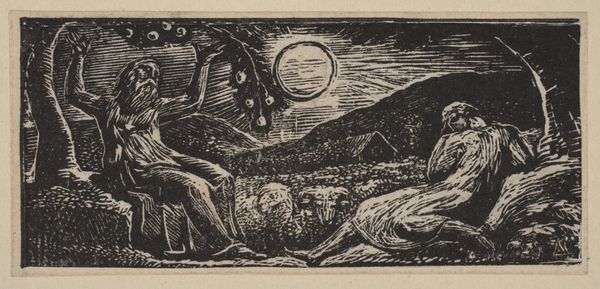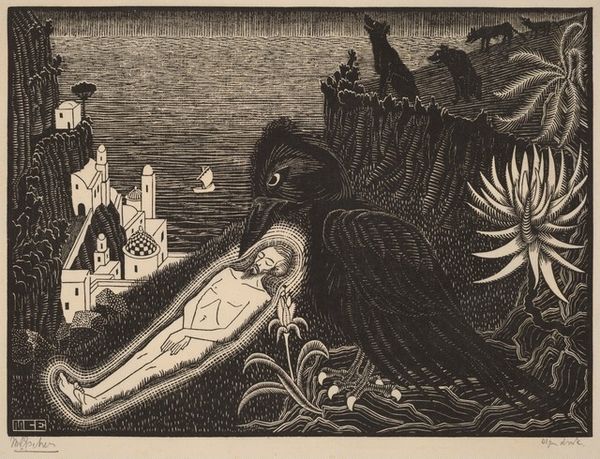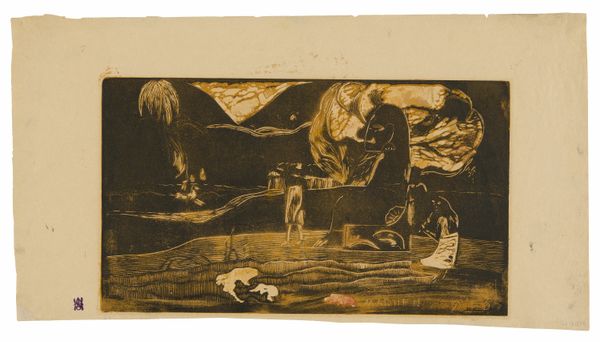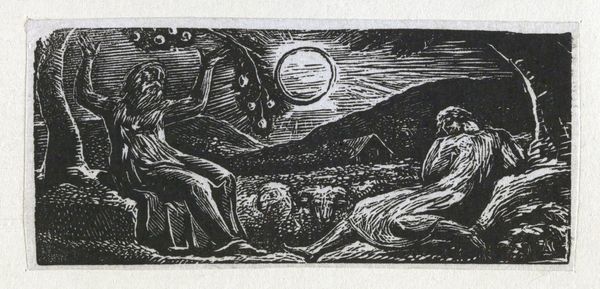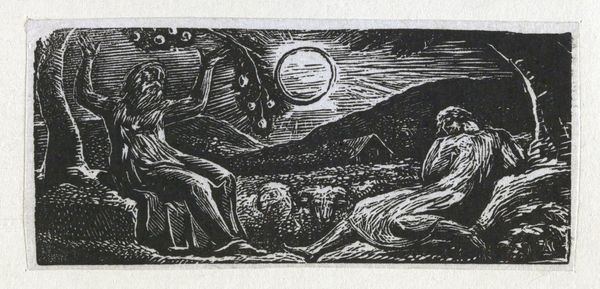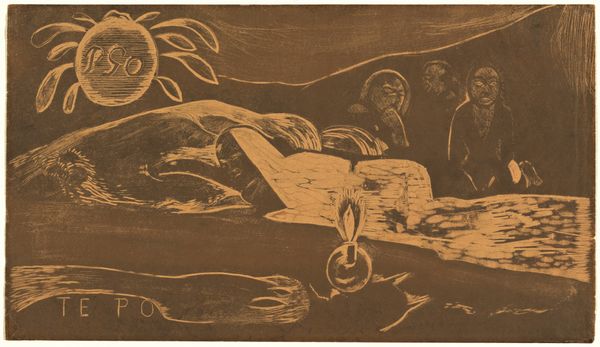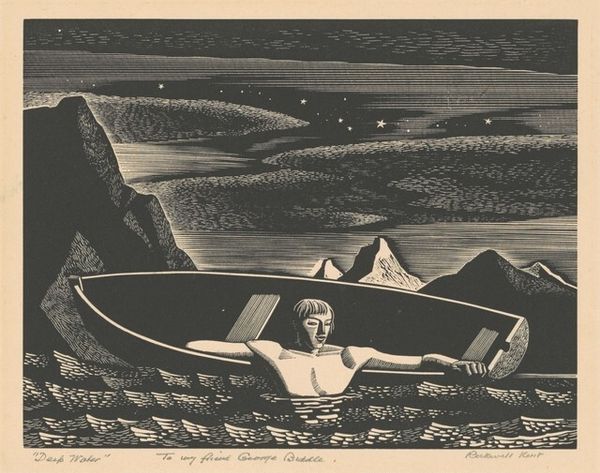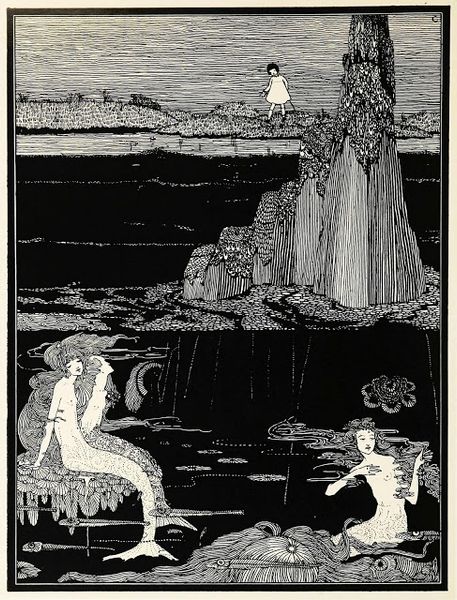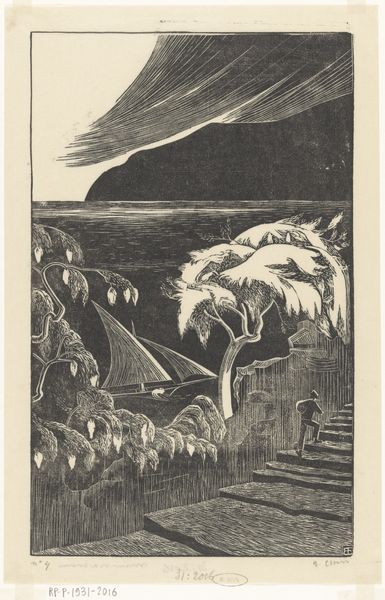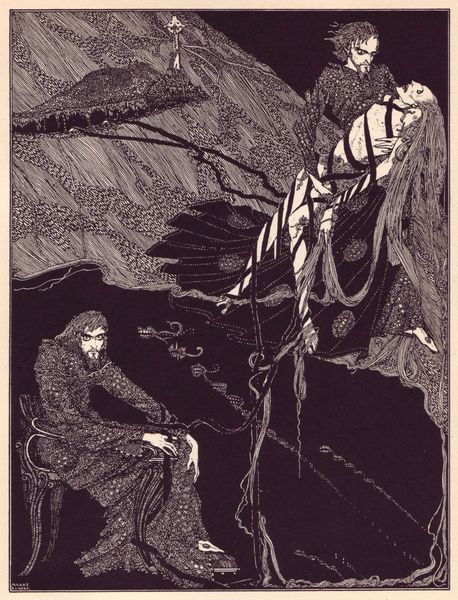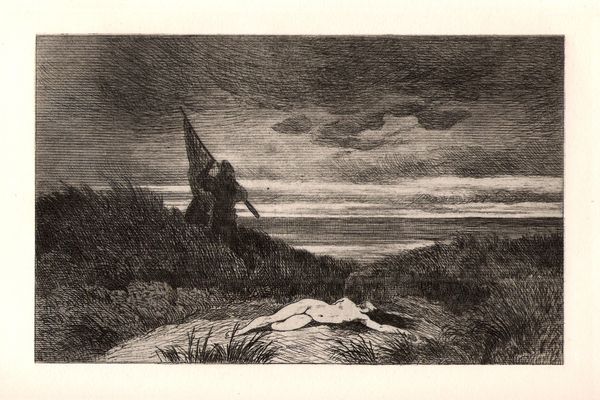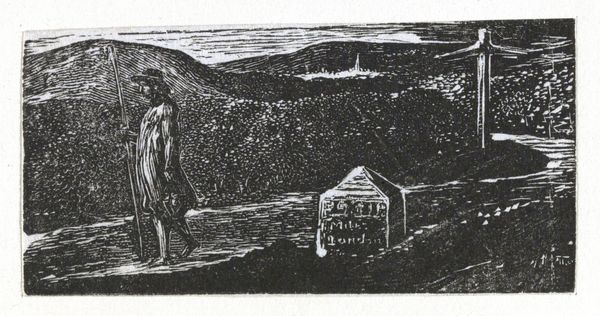
print, woodcut
# print
#
pen illustration
#
landscape
#
caricature
#
figuration
#
woodcut
#
surrealism
#
symbolism
#
post-impressionism
Copyright: Public Domain: Artvee
Editor: So, this is "Maruru" by Paul Gauguin, a woodcut print from around 1894-95. I'm struck by its stark contrast and flattened perspective, which almost gives it the quality of a tapestry, while creating a dream-like atmosphere. How would you interpret this work? Curator: Gauguin's primitivism is really on display here. He's not just depicting a Tahitian scene; he’s engaging with and, some would say, appropriating Tahitian culture, filtered through his own European artistic lens and the Symbolist movement. How do you think his intended audience in Paris would have understood this imagery? Editor: Maybe they saw it as an exotic escape, a romanticized vision of a faraway place untouched by industrialization. Was it intended to be documentary or expressive? Curator: That's a crucial question. Gauguin wanted to find a place beyond the corrupting influence of Western civilization, yet his interpretation inevitably involved imposing his own artistic framework. The woodcut medium itself, with its rough, less refined appearance, plays into this desire for the “primitive.” How do you think this affected his perception of the people and customs of the South Pacific? Editor: I hadn't considered the medium’s contribution. It's interesting how the roughness of the woodcut romanticizes the place and culture even more. Maybe he emphasized only the details he felt confirmed his European ideal. Curator: Precisely. We should remember that art institutions, including galleries and collectors back in Paris, shaped how these images were received, turning an engagement with another culture into a marketable commodity. Understanding that process tells us a lot about how the West viewed the rest of the world then, and even now. Editor: It really makes me rethink the surface-level appreciation of exotic art. It prompts you to reflect on who creates art, and who benefits from its circulation. Curator: Exactly. Examining that power dynamic helps us avoid repeating the mistakes of the past.
Comments
No comments
Be the first to comment and join the conversation on the ultimate creative platform.
